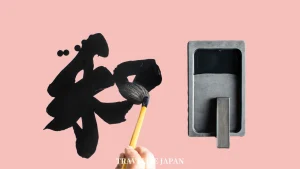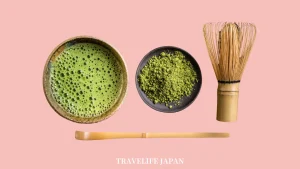Heading to a restaurant in Japan? Mastering useful Japanese phrases can transform your dining experience. This guide, perfect for beginners and those aiming to polish their language skills, provides essential expressions for navigating menus, placing orders, and interacting with staff, allowing you to dine confidently while honoring local customs.
Useful Japanese Phrases in Restaurant

- いらっしゃいませ Irasshaimase
“Welcome.” Staff will often greet you with this phrase upon entering. - テーブルでお願いします Te-buru de onegaishimasu
“A table, please.” Use this to request a table. - 予約しています Yoyaku shiteimasu
“I have a reservation.” Useful if you’ve booked in advance. - メニューを見せてください Menyuu o misete kudasai
“Please show me the menu.” To request the menu. - これは何ですか Kore wa nan desu ka
“What is this?” When inquiring about a specific dish. - お勧めは何ですか Osusume wa nan desu ka
“What do you recommend?” A great way to get suggestions. - アレルギーがあります Arerugii ga arimasu
“I have an allergy.” Followed by the ingredient you’re allergic to. - ベジタリアンの料理はありますか Bejitarian no ryouri wa arimasu ka
“Do you have vegetarian dishes?” For vegetarian options. - 注文をお願いします Chuumon o onegaishimasu
“I would like to order.” When you’re ready to order. - これをお願いします Kore o onegaishimasu
“This one, please.” Pointing to a menu item when ordering. - 追加で Tsui ka de
“Additionally…” To add more items to your order. - お水をもらえますか Omizu o moraemasu ka
“Can I have some water?” To request water. - もう少し時間が必要です Mou sukoshi jikan ga hitsuyou desu
“I need a little more time.” If you’re not ready to order. - 別々に払います Betsu betsu ni haraimasu
“We will pay separately.” For splitting the bill. - 全部でお願いします Zenbu de onegaishimasu
“All together, please.” To pay the bill as one group. - 領収書をお願いします Ryoushuusho o onegaishimasu
“Could I have a receipt, please?” When you need a receipt. - カードは使えますか Kaado wa tsukaemasu ka
“Can I use a card?” To inquire about card payment. - お箸がありますか Ohashi ga arimasu ka
“Do you have chopsticks?” If you need chopsticks. - フォークをお願いします Fooku o onegaishimasu
“A fork, please.” If you prefer a fork over chopsticks. - 味噌汁を追加できますか Misoshiru o tsui ka dekimasu ka
“Can I add miso soup?” To add a side dish. - 辛くないでお願いします Karakunai de onegaishimasu
“Not spicy, please.” If you prefer less spicy food. - これを持ち帰りできますか Kore o mochikaeri dekimasu ka
“Can I take this to go?” For takeout. - お腹いっぱいです Onaka ippai desu
“I’m full.” To show satisfaction with the meal. - デザートメニューを見せてください Dezaato menyuu o misete kudasai
“Please show me the dessert menu.” For a sweet ending. - 清算をお願いします Seisan o onegaishimasu
“Check, please.” To ask for the bill. - おいしかったです Oishikatta desu
“It was delicious.” Complimenting the meal. - ごちそうさまでした Gochisousama deshita
“Thank you for the meal.” Said after dining, showing appreciation. - トイレはどこですか Toire wa doko desu ka
“Where is the bathroom?” An essential question. - 席を変えてもらえますか Seki o kaete moraemasu ka
“Can I change seats?” If you need to move. - 予約を取りたいのですが Yoyaku o toritai no desu ga
“I would like to make a reservation.” To book a table for later.
Basic Expressions for Food Tastes in Japanese
In Japanese cuisine, the balance and harmony of different flavors are highly valued. Understanding how to express these basic tastes in Japanese can enrich your dining experience and help you communicate more effectively about food. Here are the fundamental expressions for describing the taste of food in Japanese:
- 甘い Amai
“Sweet.” Used to describe dishes that have a sugary or sweet flavor. It’s often used for desserts, fruits, or even some savory dishes that have a hint of sweetness. - 塩辛い Shiokarai / 塩っぽい Shioppoi
“Salty.” These words are used to describe food that has a pronounced salt flavor. It can be used for soups, pickles, and other dishes where salt is a dominant taste. - 辛い Karai
“Spicy.” This term is used for dishes with a strong heat or spice, often from chili peppers or wasabi. It’s commonly used in the context of Japanese curries, spicy ramen, or other dishes with a kick. - 苦い Nigai
“Bitter.” Used for foods with a bitter taste, such as certain types of vegetables or some herbal medicines. - 酸っぱい Suppai
“Sour.” This expression describes food with an acidic or tangy flavor, like pickles, vinegared dishes, or some fruits. - うまい Umai / 美味しい Oishii
“Delicious.” While not specific to a particular taste, these words are a positive affirmation of the overall flavor of a dish. - 淡白な Tanpaku na
“Mild” or “Light.” Used for foods that have a subtle, delicate flavor, often applied to certain fish, tofu, or light soups. - 濃厚 Noukou)
“Rich.” Describes dishes that are hearty, creamy, or have a deep, intense flavor. Often used for rich broths, creamy sauces, or decadent desserts. - コクがある Koku ga aru
“Has depth of flavor.” This phrase is used to express that a dish has a complex, satisfying taste that lingers pleasantly. - まろやか Maroyaka
“Mellow.” Refers to a taste that is smooth, well-rounded, and harmonious, without any harshness.
Japanese Restaurant Dining Etiquette

Preparing to Dine
The Japanese dining experience begins with a ritual cleansing using an o-shibori, a wet towel provided for cleaning your hands, symbolizing the start of a meal. This act of cleanliness sets the stage for a respectful dining experience. Before eating, expressing gratitude for the meal with “itadakimasu” reflects appreciation for the food and those who prepared it, a practice deep-rooted in Japanese culture.
Chopstick Mastery
Chopstick usage in Japan comes with its own etiquette, emphasizing respect and consideration for others. Learning to use chopsticks correctly involves mastering their grip and avoiding behaviors considered disrespectful, such as pointing with them or using them to pass food directly to another person’s chopsticks. Proper placement of chopsticks when not in use, like on a hashioki (chopstick rest), further reflects mindfulness of dining customs.
Savoring the Meal
Engaging with specific dishes like rice, miso soup, sushi, and noodle soups showcases the diversity of Japanese cuisine and the etiquette associated with each. Holding rice and soup bowls in hand illustrates a traditional way of eating, while slurping noodles is an accepted sign of enjoying the meal. When dining on sushi, understanding the appropriate use of condiments and whether to use hands or chopsticks enriches the experience, demonstrating respect for the culinary art form.
Concluding the Meal
The conclusion of a meal is marked by the phrase “Gochisosama deshita,” thanking those who prepared and served the meal. This expression of gratitude encapsulates the reverence for food and the communal aspect of dining in Japanese culture. The entire dining experience, from beginning to end, is imbued with practices that honor the meticulous preparation of Japanese cuisine and the shared joy of eating.
Conclusion
Visiting a restaurant in Japan can be a smooth and enjoyable experience with these useful phrases at your disposal. They will not only help you navigate through your meal with ease but also demonstrate your respect for the Japanese language and culture. Whether you’re studying Japanese for travel or personal growth, these phrases will surely enhance your dining experiences in Japan.
\ Follow Our Community /
STUDY IN JAPAN
INQUIRE NOW
Please feel free to seek our help at NO COST.
We are looking forward to meeting you!








